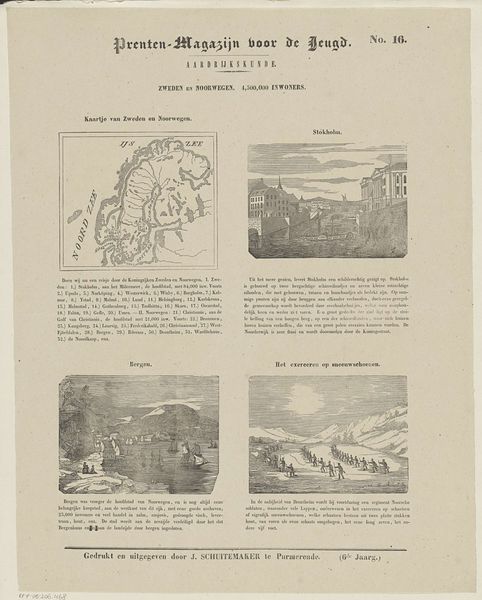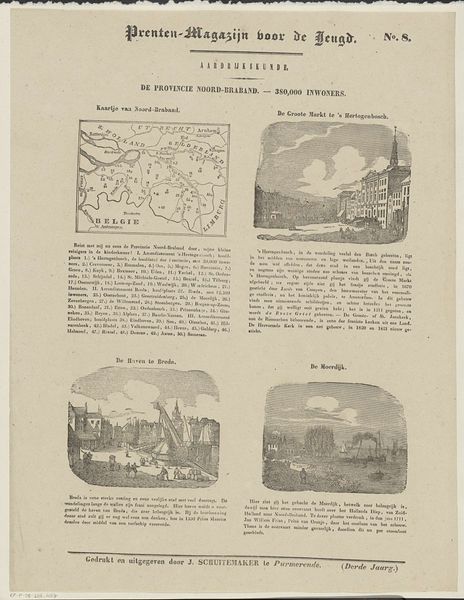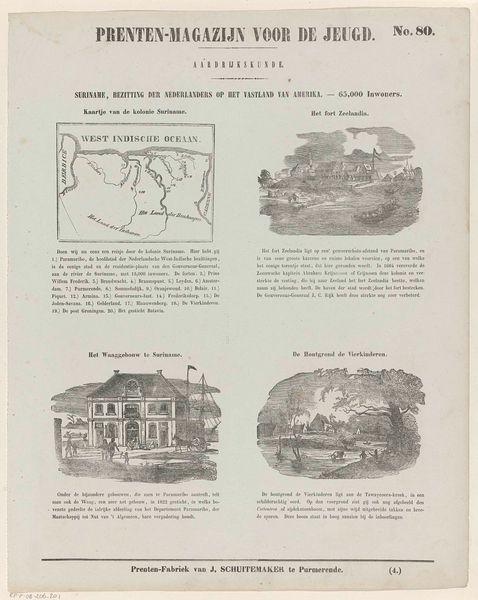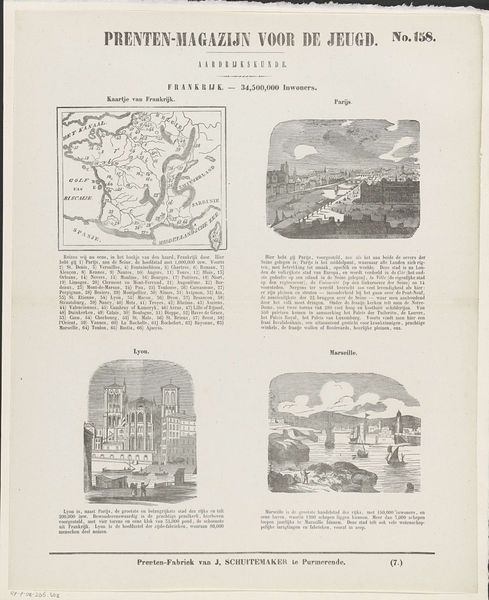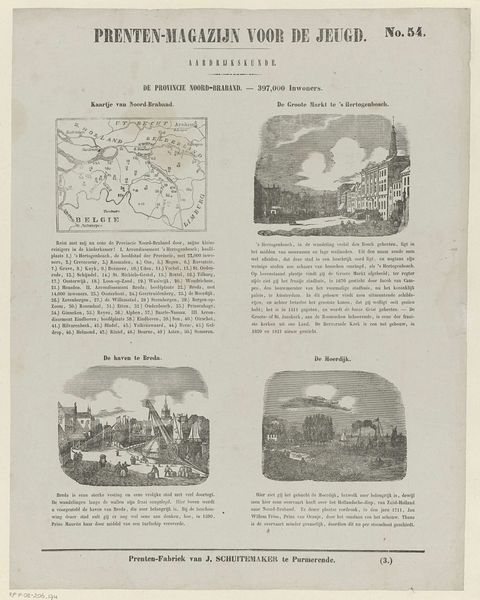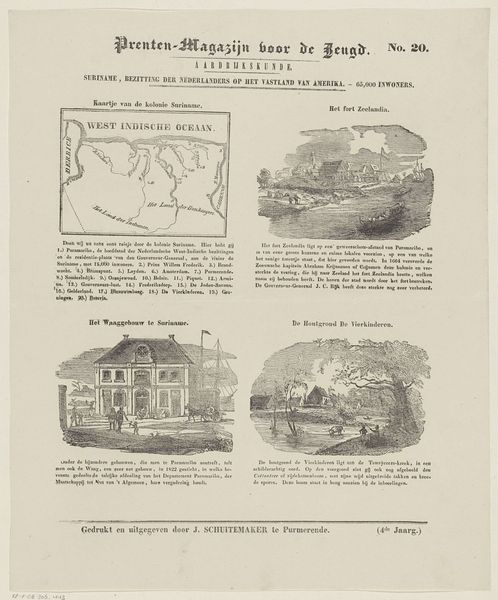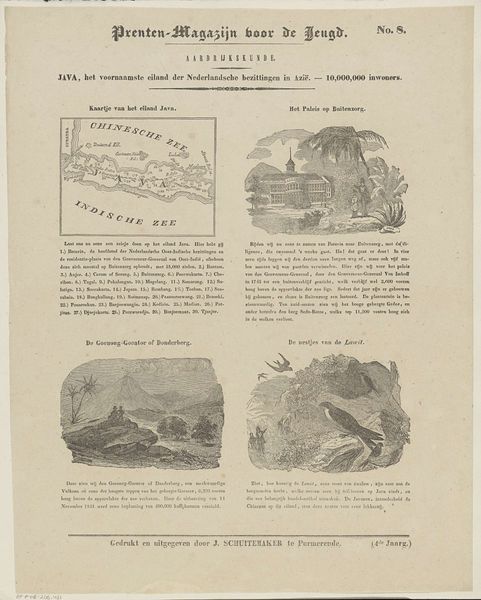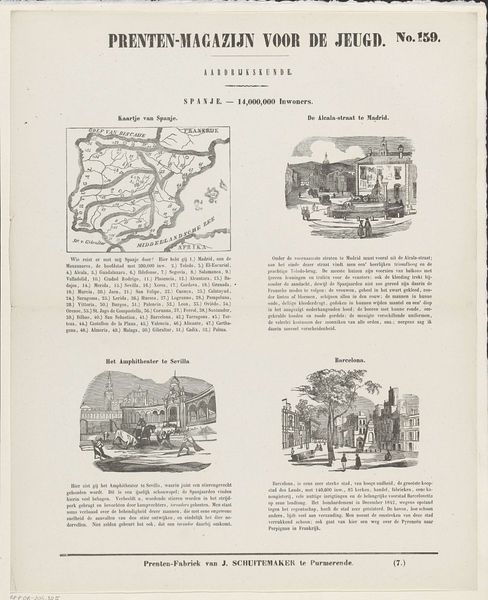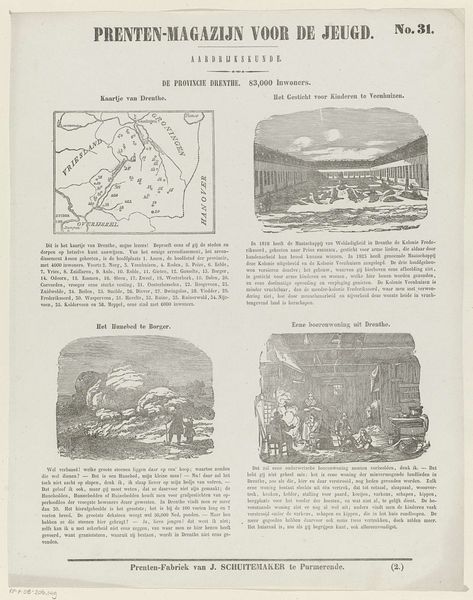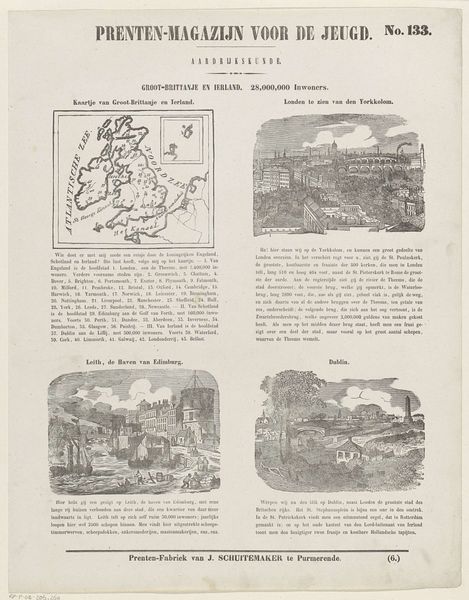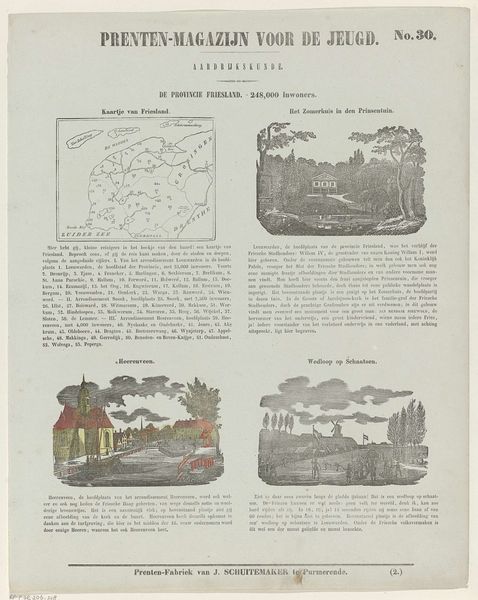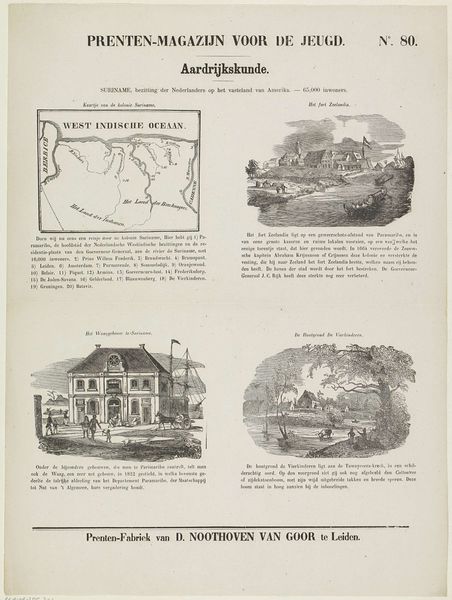
graphic-art, print, paper, engraving
#
graphic-art
# print
#
landscape
#
paper
#
romanticism
#
cityscape
#
engraving
Dimensions: height 435 mm, width 334 mm
Copyright: Rijks Museum: Open Domain
Editor: We're looking at "Switzerland, 2,250,000 Inhabitants," an engraving from 1849 by Jan Schuitemaker. It presents a rather intriguing collection of scenes. The detail is amazing for an engraving, but I'm struck by the somewhat propagandistic feel. What's your take on this piece, considering its historical context? Curator: That's an insightful initial reaction. This work, part of a "Prints Magazine for the Youth," isn't merely a collection of pleasant landscape scenes, but actively participates in constructing a particular image of Switzerland, a visual argument as it were. Consider the time, 1849: a period of emerging nationalism across Europe. What stories might these images be telling about Swiss identity to its young readers? Editor: So, the images weren’t simply chosen at random. What would they have learned from seeing a map of the country alongside images of its landscape? Curator: Exactly. The strategic placement of scenes is crucial. The map serves to define territory, the literal boundaries of the nation, anchoring its identity geographically. The scenes then emphasize specific aspects of that defined territory. The clock tower suggests civic order and precision, while the bridge represents engineering prowess and connectivity. The mountain scene implies the sublime, of untamed, imposing grandeur, things to be both mastered and feared. These aren't simply "nice places;" what feelings are evoked and what national story do those feelings support? Editor: I see – it’s about conveying a message of Swiss strength and sophistication through carefully selected and idealized imagery. So it functions almost as a national advertisement? Curator: Precisely. Now, thinking about the intended audience, and its specific placement in a youth magazine… how is that image being strategically projected to younger generations and what social structures supported such messaging? Editor: That makes so much more sense now. I was focusing on the artistic details, but the socio-political intention is much clearer. Curator: And that interplay is precisely where history deepens our understanding of art.
Comments
No comments
Be the first to comment and join the conversation on the ultimate creative platform.
